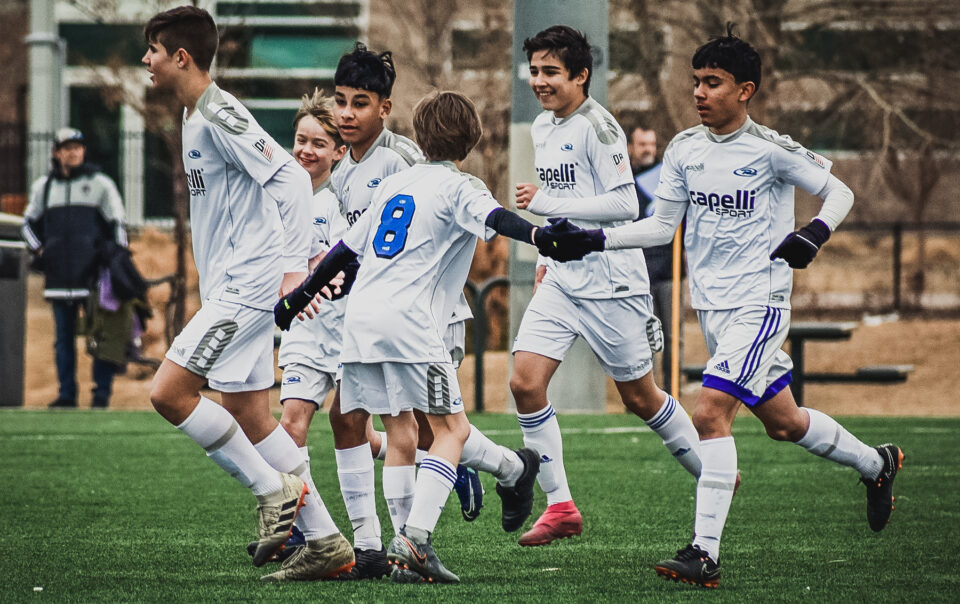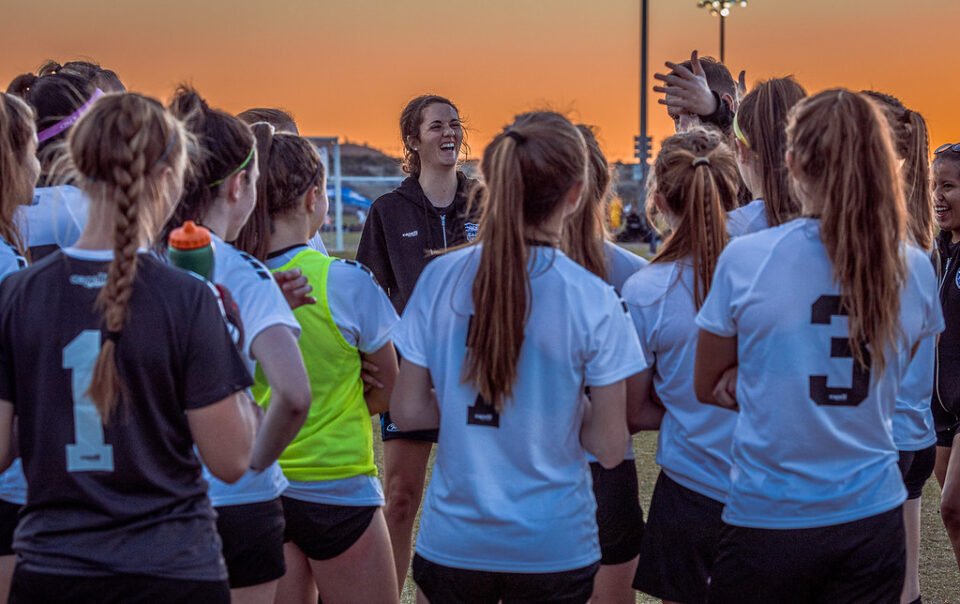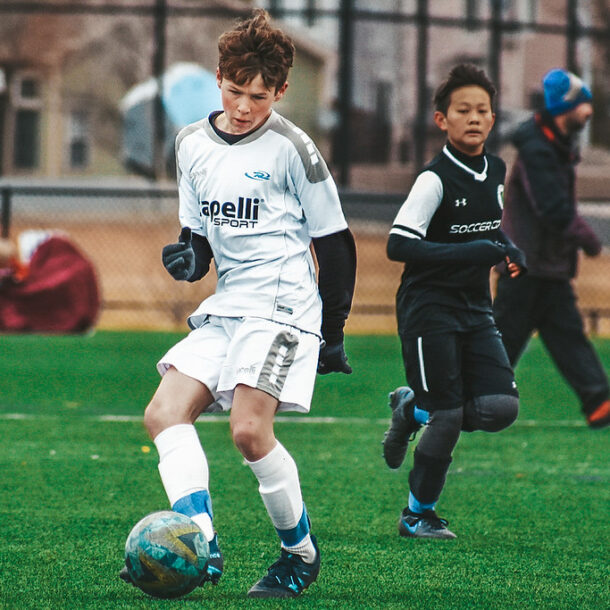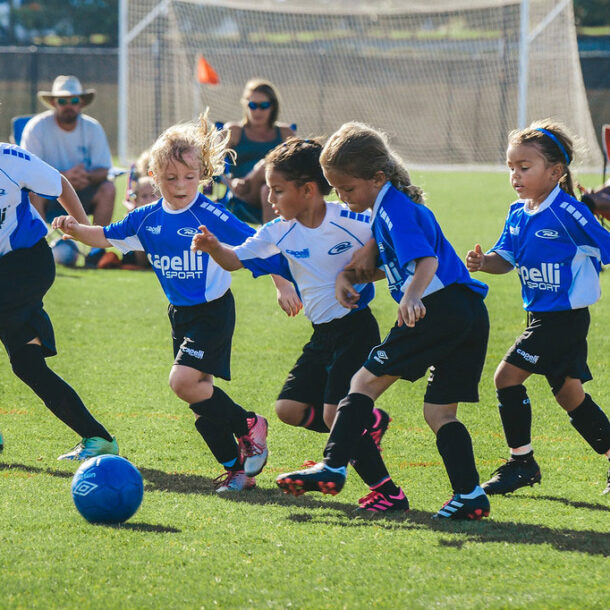
*Clicca qui per trovare la versione italiana di questo documento – The Rush Way Bantam Division (ITALIA).
*Clique aqui para encontrar a versão em português deste documento – The Rush Way Bantam Division (Português).
THE RUSH WAY AGE GROUP GUIDES
The Rush Way Age Group Guides provide a more in depth look at Rush Soccer’s Developmental Blueprint, covering technical, tactical, physical, and psychosocial considerations, as well as guiding on how to apply Rush Way philosophies effectively to each age group.
THE RUSH WAY PHILOSOPHY
The Rush Way is the embodiment of all that is Rush Soccer; the rules and manner in which Rush members hold themselves and how they expect other Rush members to conduct themselves. This is not inherent in all people, but can be learned. The Rush Way encourages passion, leadership, respect and, above all, quality. Before reading this document and complementary to any age group curriculum, every coach should read the entire Rush Way Philosophy.
Formation: We believe that, for 7v7, the formation 1-2-3-1 presents a good base to smoothly transition into our 9v9 formation (1-2-4-2) and ultimately into our 11v11 base scheme (1-3-5-2).
This is fundamented on the similarities that the roles presented will have in terms of playing actions. In this initial display, the roles of center backs, holding midfielders, wing backs, and forwards adequately resemble the ones of the expanded 11v11 1-3-5-2 formation.
This formation has value added as it also tends to be the base of other popular 11v11 setups like 1-4-3-3.
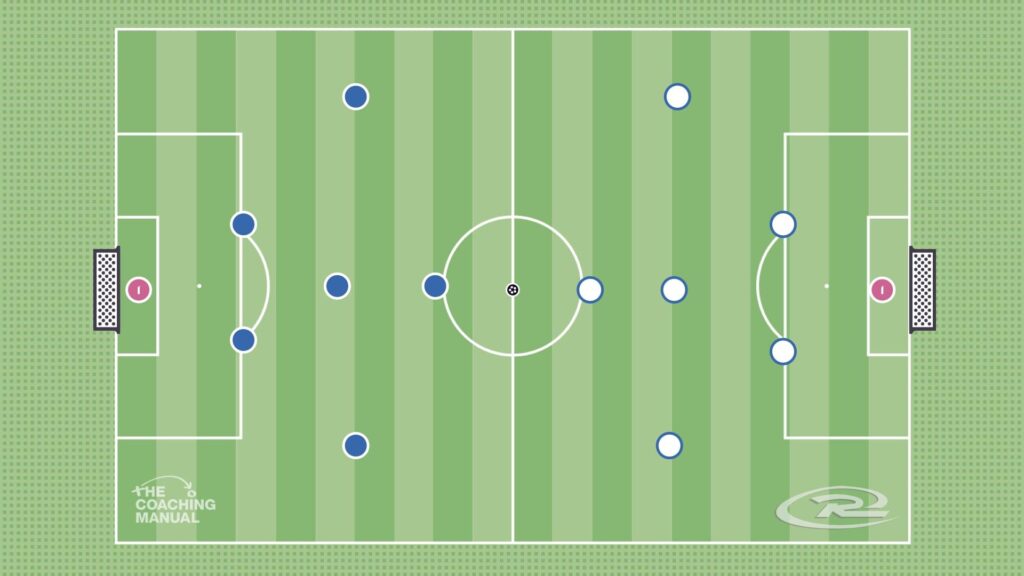
Set Pieces: We recommend to frequently use the following schemes to play out of the back and defend corner kicks. Vary to other schemes as well, especially for players to learn both zonal and man to man marking (in corners). These are simply presented to favor an easy transition to the 9v9 and 11v11 scenarios.
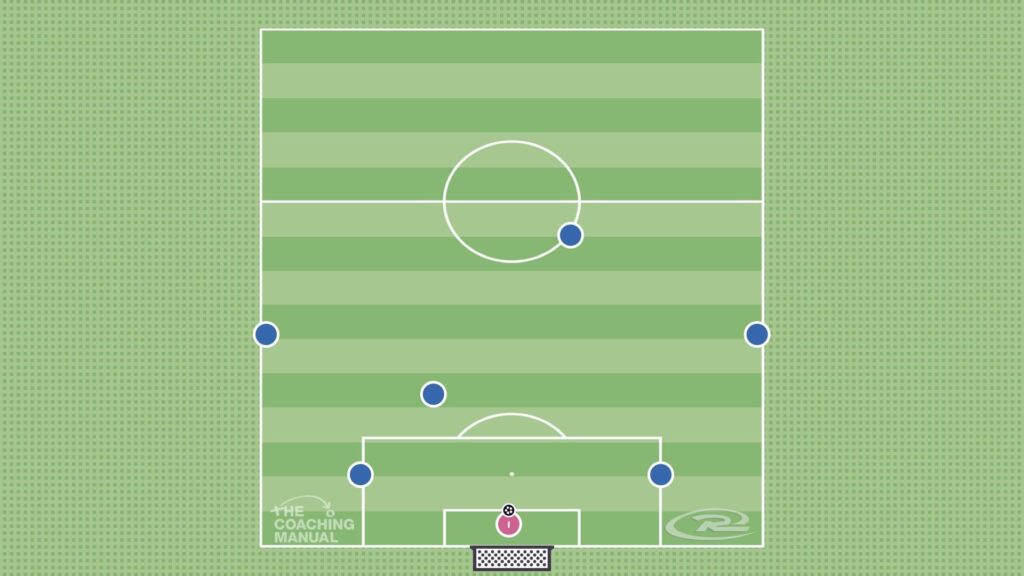
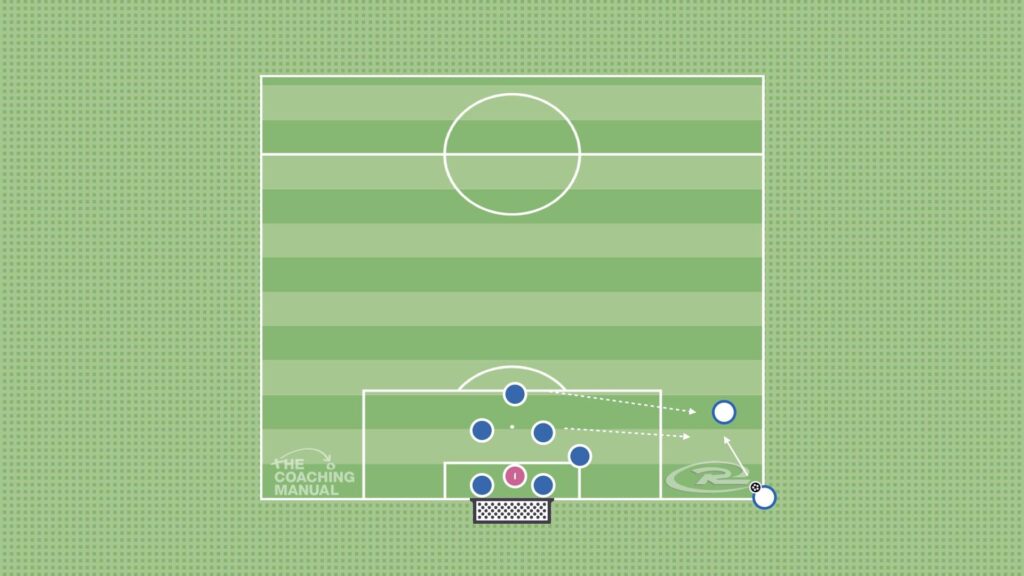
6-3-1: The 6-3-1 philosophy is in place to ensure that all teams are progressing and improving consistently, as well as experiencing the emotions of winning and losing through manipulating six wins, three losses and one tie throughout the year. If a team is winning all the time, they are encouraged to schedule a scrimmage against tougher competition to be sure they are being pushed. Likewise, if a team is in a losing slump, then a scrimmage is encouraged against an opposition that they should beat, to regain a positive attitude, develop a goal scoring mentality and create confidence in defense.
Core Values: There are 11 players on the field and so Rush Soccer has 11 core values as well. At these age groups, our players, coaches, and supporters should be focusing on the seven highlighted below:
- Accountability
- Advice
- Empathy
- Humility
- Enjoyment
- Leadership
- Passion
- Respect
- Safety
- Tenacity
- Unity

Player Position: Rush believes that under the age of 14, every player should have the opportunity to experience all positions on the field. Players should not be stereotyped into specific positions because of speed, size or other qualities, but should experience the emotion and functions of all positions on the field. These experiences allow them to advance their soccer knowledge, raise their technical ability, and gives them opportunities to think as a field player, all of which raise the level of their position-specific demands.
70 Games & Playing Time: Playing time for any individual is completely at the coach’s discretion. Rush encourages that playing time at all levels should be equal throughout the season. At the younger developmental ages, players should be exposed to as much of the game as possible. Limiting team roster size will aid in increased playing time for all players. Remember the spirit of the 70 Games Philosophy stated at The Heart Of The Rush: One of the main objectives of a Rush club must be to provide opportunities and environments for the players to elevate the overall number of playing hours as much as possible.
Substitutions: Regardless of the state of the game, all players should come off the field and exchange courtesy with their replacement (when possible). This will promote team spirit and give confidence to the players entering the field.
Pre-game / Warm Up Routines: For this age group, the Rush Way suggestion is to take the warm up opportunity to review a concept trained during the week on a quick activity. Promote the excitement of playing, and remember that kids at this age don’t need any type of warm up from a biological point of view, so routines like stretching are not needed.
During the Match: Games are a great coaching opportunity, but caution, don’t over do it. Make sure your coaching is positive and builds confidence, like stated in the Rush Blue Thread, and make most of your comments when off the ball and preferably in natural stoppages.
Half Time: Rush encourages players to analyze problems and discuss solutions on their own before coach intervention. Players should be given a couple of minutes away from the coaching staff to voice opinions and discuss solutions. The coach should then bring their views and knowledge to the group. The Rush Way expects our comments to apply the 4:1 positive to instructional coaching method. Once again, understand the 4:1 ratio as a tool to coach positively, not as a unbreakable rule. Don’t over-coach in this period, remember that kids’ span of attention is limited and they don’t understand abstract concepts at this age, so focus on the motivational aspects and the enjoyment of playing.
Post Game: Once again, the Rush Way is to coach positively, encourage players, and build confidence. Take the opportunity to promote core values like Humility & Respect when winning, and Tenacity when losing.
Greeting: Players are expected to greet the staff with a handshake for all local, national and international staff. The Rush staff across the country expect their players to shake their coaches hand each time they meet. Why?… Respect, build social skills, break down barriers, learn culturally accepted behavior, the list goes on.
Team Photos: The Rush has a certain style of their pictures, learn it and apply it. Take a photo of your rotating starting seven (four in the back, three in the front), and a whole team picture to promote Unity.
Player First, Team Second: Similar to the European youth club structure, Rush encourages the player to be first before his or her individual team. This enables players to be comfortable playing on teams that are in line with their ability regardless of age but based on performance in training and game days. Players are encouraged to train with higher level teams to accelerate their development.
R.E.A.C.H.: All players should be aware of the R.E.A.C.H., Rush Equipment Assisting Children program and understand the importance of social responsibility. In a nutshell, this program provides the opportunity for our players to turn in their old uniform in order to donate to our less fortunate Rush clubs and players around the globe.
Coaches’ Sideline Behavior: From the outside, the conduct of the coach on the sideline can be perceived as a reflection of the conduct of all coaches within Rush Soccer. Coaches are a reflection of their players and should conduct themselves with respect for the officials, the opponents and the game of soccer. Remain positive when at all possible but motivational throughout. Coach actively but don’t misunderstand that with constant narrating and interventions. Actively means engaged. Education and being a first class role model are the paramount reasons that a coach has been given the honor to coach for Rush. It is always important to remember this.
Parents’ Sideline Behavior: Rush parents are expected to be positive, motivational and supportive to all players and officials. Learning the Rush chants is encouraged. Parents are expected not to coach from the sidelines but enjoy the experience of the game.
Players’ Sideline Behavior: Players are encouraged to support other Rush teams and give their full-hearted support. Learn the Rush song; be as loud but respectful as possible and help educate the rest of the country in the way soccer should be supported, as it is in the rest of the world.
Risk Management: Accepting a coaching position means accepting responsibilities. Exercise reasonable care, have a first aid kit, take a CPR course, as well as make sure every kid departs with their parents or designated individuals, never leave a player alone after practice, among others.

The Rush Blue Thread
In Soccer as in life, most things are not black or white and common sense can’t be replaced. Exceptions aside, the Rush Blue Thread pursues the application of the following eight principles at all levels and ages. Rush Soccer has a player centered approach.
- The coach uses conditions to encourage competition.
- There is an ongoing cycle of feedback and reflection between the coach and the player.
- Each activity contains decision making elements.
- The design of the season, week, and training session meets the needs of the players and teams.
- Coaching points are based on visual cues.
- The ball is rolling at least 70% of the time in the session.
- A minimum of 75% of the session is game based and opposed.
- Coaching is positive to encourage and build confidence.
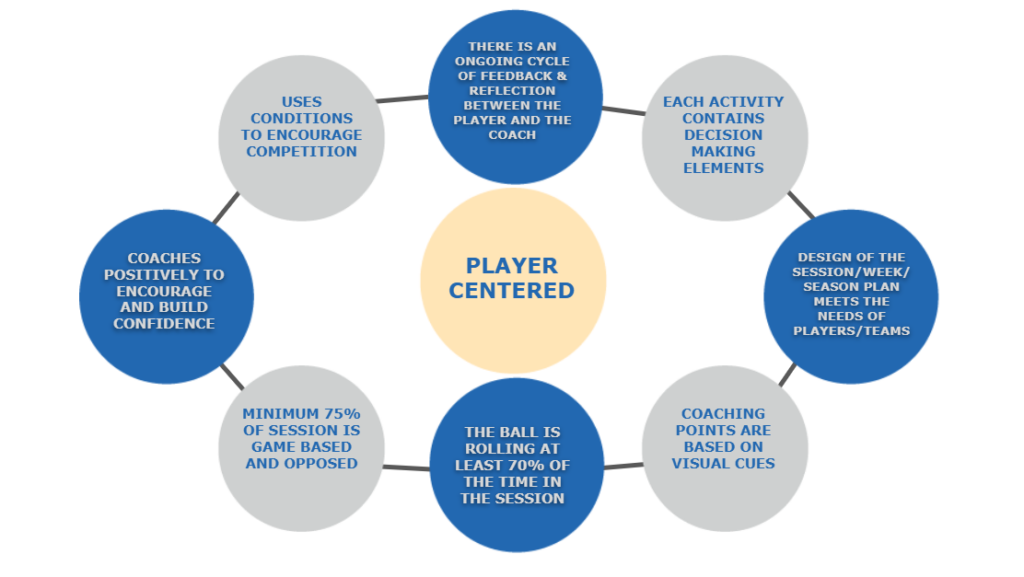
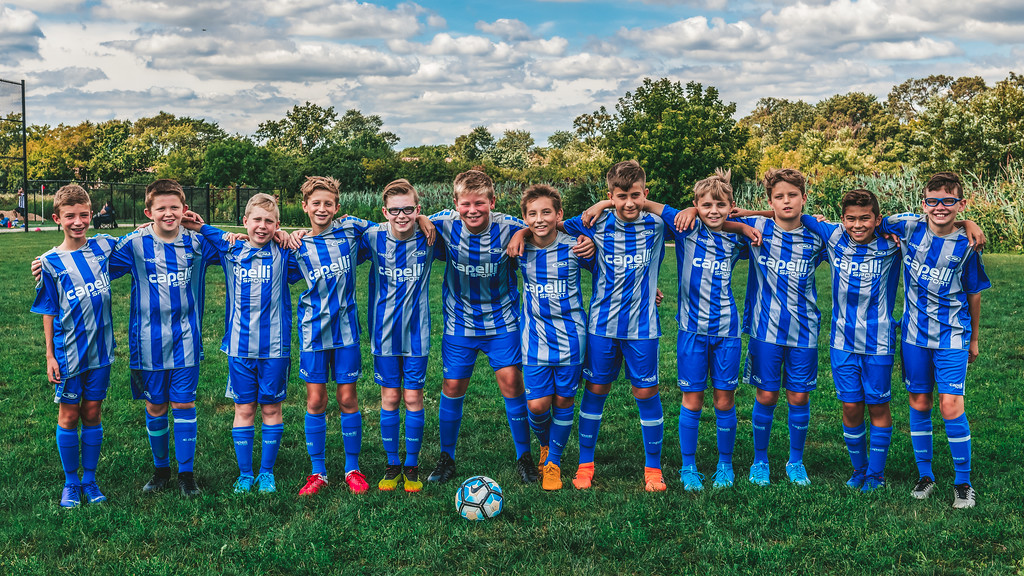
THE RUSH WAY: U9-U10 BANTAM DIVISION
OBJECTIVE: Focus On Technical Development While Sustaining An Enjoyable Environment.
Age Group Coaching Approach & Psycho-Social Considerations: We’ll repeat this same statement for all age groups: When you coach a team or a player, the most important thing is always to understand who you are coaching.
This age group is considered by many soccer schools the golden stage of technical development, based on an overall organized body and stability in growth from a biological standpoint that favors the adoption of new moves. It is important that the coach understands that by recommending a focus on the technical component we are not eliminating the development of the others, we are just giving it a higher priority and focus from a proportional standpoint.
Psycho-socially, children’s self concept and image are important, they are less sensitive but still dislike failure in front of peers, what highlights the importance of coaching positively.
They begin to initiate play on their own, they want to play and are becoming more serious about their play. They are inclined more towards small group and team activities than their predecessor age group and can usually work cooperatively in groups of 3-6. Peer group attachment and pressure becomes more significant. Adults outside family are becoming even more influential.
This new capacity to collaborate with a small number of elements favors the development of passing. Therefore, the focus remains on motivation and self confidence, but the cooperation, commitment, and competitive components start gaining ground. It’s not a performance stage yet so let’s go slow, but there will be no sin if we start making a difference between winning and losing.
The span of attention is still short even if it has risen in comparison to previous years. Kids now have concrete and sequential thoughts and actions, they are beginning to think in advance of the ball and anticipate things happening. They have the ability to remember or follow more complex instructions and solve high level problems and guided discovery questions. They are developing the ability to focus and stay on task as well as understanding time, space, and collaboration with teammates. This is an evolution from the Micro Division stages, but keep in mind that their abstract thinking is still not fully developed, so when you coach make sure you’re not talking about too complex, hypothetical situations. Brief explanations, using visual, auditive, and kinesthetic channels (you want them to see it, to hear it, and to do it) are more effective. “Show me” are still two great words to use with these age groups.
Last but definitely not least, keep it FUN!
Safety is always very important, understanding it from a holistic point of view. Children needs to feel safe in their environment to open up and experiment. Pay attention to signs like kids with their arms behind their back that show disengagement or fear. Sometimes children are misplaced in environments that are too challenging for them. Remember, if children don’t feel safe, they don’t open up to experience, and if they don’t experience they don’t learn.
Preferred Training Methodologies: Focus on game based methodologies that integrate long free play periods. Play Practice Play is still recommended but others that progress from Small Sided to Extended Sided, and/or from Analytical to Global Stages (unopposed-passively opposed-actively opposed) can be good too if they are well applied. When you use the third method, ensure the global stages are proportionally longer than the analytical. Remember the principle from The Rush Blue Thread that says: We want at least 75% of the session to be game based and opposed. Always avoid having analytical stages as the core of your session.
Highlight The Core Values Safety, Passion, Humility, Accountability, Tenacity, Unity, and Enjoyment!
So here is a Psycho-Social Cheat Sheet.
- Motivation: 4:1 Coaching Positive to Instructional Comments and other tools to build confidence.
- Self Confidence: Remember that praising by the effort rather than the skill helps children develop a growth mindset.
- Small Groups Collaboration Capacity: There’s an evolution from the previous age groups.
- Apply The Rush Blue Thread in session design and execution.
- Concrete/Abstract Thinking: This age group is more developed that the Micro Division in their understanding of abstractions, but still not fully developed. Short and concrete is more effective. Visual, auditory, and kinesthetic through demonstration.
- Respect & Discipline
- Enjoyment: Keep it fun!
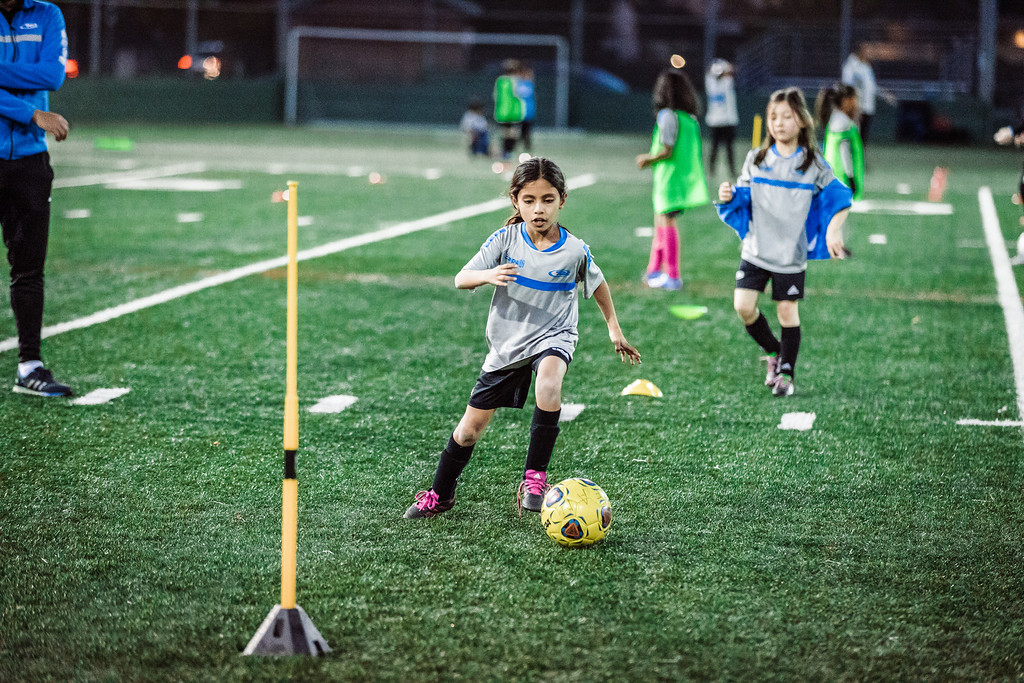
Physical Fundamentals: Physically they are getting stronger, more endurance and power related to body size and muscle mass, motor performance includes a variety of motor tasks that require speed, balance, flexibility, explosive strength and muscular endurance; pace factor is developing well. Gross and small fine motor skills are becoming refined, children in these age groups are growing head to toe.
These boys and girls go through a period of stability in their bodies development until they reach puberty. These years represent a stage of motor coordination, that is more developed than the previous years, in which the kid was working on their segment development and basic motor skills.
One important thing you always need to consider is that they do not need to work on aerobic ranges for long periods, as aerobic capacity develops mainly as a metabolic result until puberty is past. Having your players work on pure aerobic ranges for too long will only create an excess of cortisol (the stress hormone). This will result in your child associating training with a stressful experience and wanting to skip it, so NEVER have children doing training like running around the field for long periods of time. NO LINES, NO LAPS, NO LECTURES.
This way, the main physical components of the stage are to promote acceleration, reaction, agility, and acyclic speed. Add exercises that result in some safe physical contacts with others; Soccer is a contact sport, so we want children to get used to this, and remember our overall principles when planning: If you can do it though soccer specifics, is always much better!
Physical Cheat Sheet:
- Acyclic Speed
- Acceleration
- Reaction
- Agility
- NO Pure Aerobic Activities
- NO Pure Anaerobic Lactic Activities
Technical Fundamentals: The stability period mentioned above provides a wonderful opportunity to focus on technical development. That’s why this stage is commonly understood as the “golden stage” of soccer coaching. A strong technical focus in this stage is responsible of a major part of the overall technical capacity the player will have in the future.
Contrary to the Micro Division stage, you can focus on any technical skill now, just take into account your country’s soccer government body regulations when it comes to heading. We recommend a limited number of repetitions and the usage of appropriate balls like volleyballs or even balloons. Also, don’t take this as a one-size-fits-all, remember that biological and chronological ages might defer vastly.
Children emulate easily, so using videos of famous players performing moves, as well as cartoons to promote their imagination tends to have a great impact.
Tactical Fundamentals: Children this age have evolved from the Micro Division but remember that their capacity to understand abstractions is still not fully developed. Remember, as well, that Tactics has a foundation and dependency on psychological, physical, and technical development, and that this last area (technique) is the main priority of the stage. Tactically they are introduced to the 1v1, 2v1 and 1v2 roles of attacking and defending.
Both from a technical and tactical point of view, the Rush soccer player at these ages should be able to turn, dribble, shoot, spread out, create passing options, support the attack, create 1v1 or 2v1 situations and change the point of attack. In defense they should be able to protect the goal, steal the ball, make it compact, keep it compact, pressure, cover, balance and try to outnumber the opponent.
Obviously, when you explain these things, do it in simple, concrete way.
Recommended activities: Spend lots of time in small numbers like 4v4 to sustain a higher level of repetitions and promote creativity., and play many 7v7 scrimmages. Small sided games 1v1, 1v2, 2v1, 2v2, 3v2, 2v3 are ideal in this stage to progressively build their game understanding in numbers. You can still use some fun games, just don’t make these nor analytical activities the core of your session.
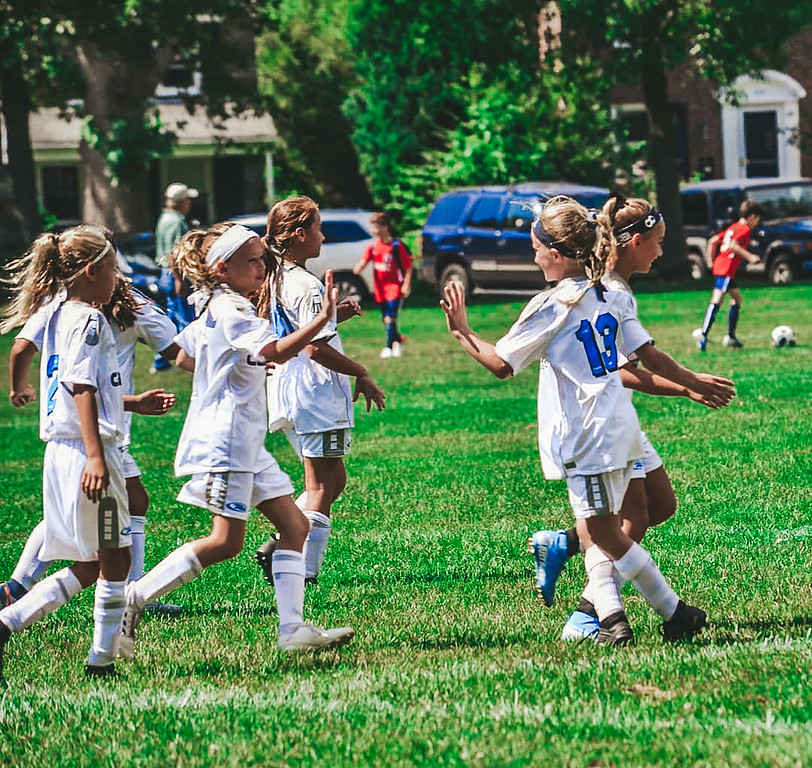
Meeting Parents
Empathy is one of Rush Soccer’s core values, and we believe it requires little empathy to understand parents’ love for their children and their desire to stay involved. That doesn’t mean parents they know exactly how to be involved. Talk to them, guide them, present this curriculum before the star of the season and explain what you will do and why you will do it. Give them feedback and be open to listening to their concerns. Share expectations and use “we” rather than “I”. Parents and coaches need each other to accomplish the overall objective of the age group: focus on technical development while sustaining an enjoyable environment.






